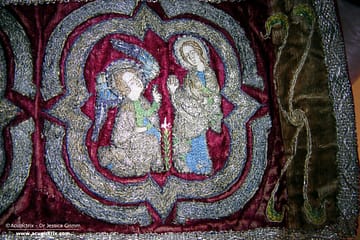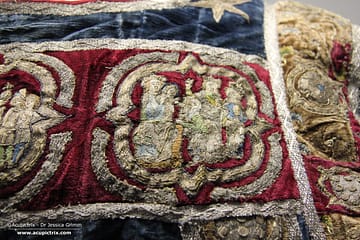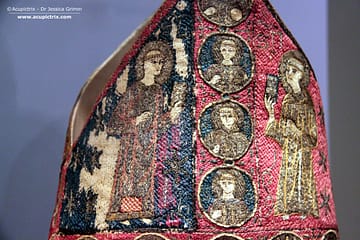Burtscheid Abbey: 14th-century embroidery revisited
Last week, I took the train to Burtscheid (Aachen) to revisit the 14th-century goldwork embroidery. I took lots of pictures so I can study the embroidery from the comfort of my home, with the bonus of blowing them up on screen. We already know that the embroideries are no longer Read more


